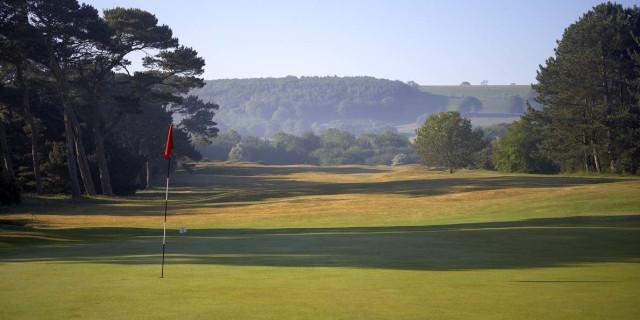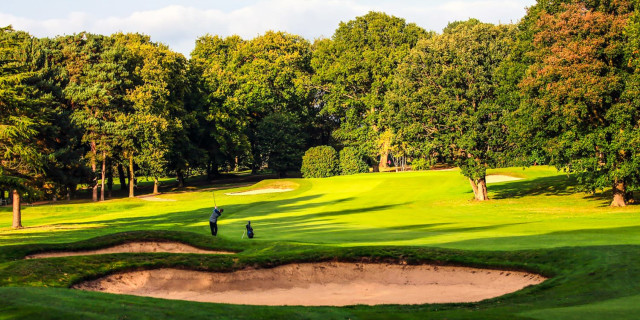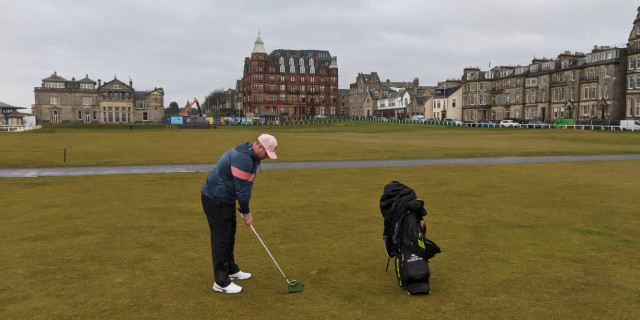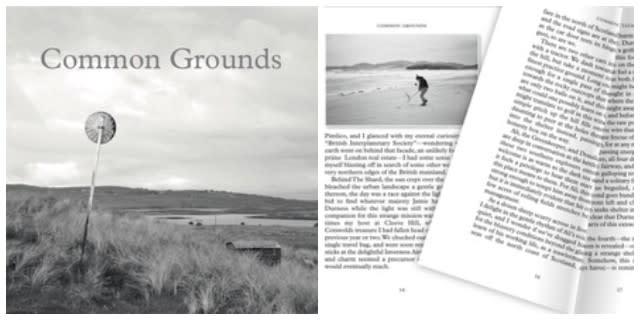
An Englishman in North Carolina: Ryder Cup Reflections
Two years ago, I was sat in a University dorm room in North Carolina with my mostly American golf teammates watching the European side being torn apart in the Ryder Cup. Naturally, I had to accept a lot of banter and jokes, all of which were in good gest obviously, but the nature of this defeat was particularly painful as a fan. Growing up during a prolonged period of intense European dominance, the performance at Hazeltine was a huge shock, seemingly setting a dangerous trend of a potential future of American supremacy.
During the 24 months after the Hazeltine victory, the Americans continued to go from strength to strength, winning consistently on the PGA Tour, not to mention that six of the last eight major winners have all come from the United States. This had many of my American friends overly confident at the start of last week. Talk about a whitewash and a blow-out didn’t seem too far fetched based on recent results, I can honestly say that based on both line-ups and the current form of each team, I wasn’t overly confident at the thought of a European victory. But a lot can change in two years, especially in the game of golf.
One significant change that occurred between these two Ryder Cups was the style and standard of the two golf courses. At Hazeltine, the course was set-up in a way that perfectly suited the American style of play. Powerful hitters like Koepka, Johnson and Fowler tore apart the course with bombing drives, knowing that there were very few areas that would penalise any wayward tee-shots. These wide fairways and extremely fast greens massively benefited the U.S team, whose distance played a significant advantage during the competition.
There was a lot of talk beforehand about Le Golf National in France being a perfect destination for the Ryder Cup and in my opinion, it did not disappoint. The venue itself was fantastic for an event of this magnitude, the 6,000 seat grandstand on the first tee created an atmosphere that the Ryder Cup has never experienced before. On the golf side of things, the course was set-up purposely to negate the American power hitters, a genius design which provided all 24 players with a challenging yet rewarding task. The course demanded careful precision and strategy throughout, something that seemed to significantly benefit the European players. The torturous rough and constant threat of looming water hazards caused both teams to play more conservative, something which I think played into the hands of the Europeans. In my opinion, this idea of careful strategy and course management is something that the PGA Tour and American golfers are seriously lacking. The culture of golf in the States ultimately revolves around power hitting, which has meant that the majority of the courses on the circuit provide the players with the challenge of length off the tee instead of accuracy.
Now, I’m not saying that golf in America is easier by any stretch of the imagination, but I think these courses have lost the element of skill and strategy and have simply become a long hitters delight. Le Golf National perfectly negated the long hitting without penalty asset that many of the American players were used too. It was very clear to see which U.S players significantly struggled to adapt their game to these unique European conditions.

Another significant difference between these two Ryder Cups was the strength of the pairings. At Hazeltine, Captain Davis Love III created some of the most powerful and clinical American pairings the Ryder Cup had ever seen. Combinations like Spieth/Reed showcased some unbelievable golf. While the Americans fed off one another’s success and enthusiasm, the European team seemed very lacklustre and lethargic, highlighting a possible lack of chemistry and connection between their pairings. In 2018 however, this was turned on its head completely. The American’s pairings were heavily scrutinised in the media, many people believing Furyk catastrophically messed up choosing his favoured partnerships. Some were shocked that the infamous Spieth/Reed combination did not appear again this time around, but the best friend partnership of Spieth/Thomas was an innovative and powerful combination that secured the Americans valuable and much needed points. The other pairings, however, appeared to lack any great motivation or chemistry, combinations like Johnson/Koepka and Reed/Woods looked fantastic on paper, but dramatically lacked the anticipated firepower on the course. The Europeans on the other hand, produced some of the most memorable and successful pairings in recent history. After a disappointing morning, every single European pair seemed to rally around each other, feeding off the energetic crowd as well as each other. The emotion we saw from typically calm players like Rose and Casey was completely unique, highlighting the level of passion that every player felt towards achieving this historic win. The experience of players like Poulter, Stenson and Garcia, combined with the intense of passion from young rookies like Rahm, Fleetwood and Hatton created European partnerships that tore apart the Americans. And of course, when people remember this 2018 Ryder Cup, they will undoubtedly forever remember the mesmerising partnership, that was ‘Moliwood.’

While I do agree with some of the scrutiny directed at Captain Furyk for his choices and that there may have even been conflict within the US camp, I also believe that it would have taken something quite special to deter these European partnerships from achieving their goal. These players were completely in sync with each other and performing way above any expectation that any golfing fan could have imagined.
One factor that I believe is always overlooked is the mentality each team has, primarily when they are playing for an idea or a belief that is much larger than them. We have seen a variety of examples of this throughout sport, the Ryder Cup in particular has provided viewers with many of these moments. For example, at Medinah in 2012, Europe was seemingly down and out of the competition, but in the Sunday singles the team produced one of the greatest comebacks in sport. In the interviews after, the team dedicated their victory to the great Seve Ballesteros, who had died just a year earlier. The emotion which they showed on that final day represented a passion for success, playing for the honour of Seve’s incredible legacy seemed to elevate each European’s game to an entirely new level on that final day.
In 2016 at Hazeltine, the U.S.A had a similar motivation, due to the death of the irreplaceable Arnold Palmer who had passed away just before the competition. The event revolved around the legendary golfer’s legacy and the impact he had on the game itself, providing the American team with a truly heart-warming belief to play for the man who influenced so many of their careers.
In 2018 at Le Golf National, I believe a different kind of belief was installed into the minds of every European on that team, providing a determined mental stimulation unique to this particular Ryder Cup squad. With all the talk about how amazing the youthful and exciting American team was, combined with coming off the back of a monumental and dominating previous performance, the majority of golfing fans and media critics expected a similar catastrophe for Europe.
In my opinion, this was a categorical mistake, in my short period of watching the Ryder Cup, one thing has always been obvious to me, Europe loves being the underdog. This lack of confidence in the team was like a moth to a flame for all the players, while others doubted their abilities or even questioned them being in the team, the focus never seem to waiver. By Monday morning a message had reverberated around the globe, European golf is in good hands.
So, two years on in 2018, I’m in the same dorm room in North Carolina, with the same group of American golfers, watching a European side defy all the odds and perform above and beyond expectation. Simply put, the performance at Le Golf National by the European team has restored the popularity and strength of European golf once again. But most importantly for me, for another two years I have bragging rights over my American friends, something which cannot be quantified. But this is why the competition is one of the best events on the sporting calendar. Each team fights tooth and nail to grind out a win, the emotion and passion we see stems from this forceful belief that losing in this event is just not an option. Throughout the competition words might get said and actions might be questioned, but when the final handshakes take place on Sunday afternoon, regardless of the winner, the respect and admiration these athletes have for one another is once again restored.
This for me was highlighted with Patrick Reed on Sunday afternoon last week. His Ryder Cup behaviour over the years has created a love-hate relationship between Reed and the golfing public. While some may see his characteristics as arrogance or cockiness, others will see it as intense passion personified. After his win over Tyrrell Hatton in the singles on Sunday afternoon, he turned to smugly shush the European crowd, only to follow it by circling round and clapping the fans around the green, appearing to thank them for their amazing support throughout the week. While some European fans and commentators were aggravated by this, personally I thought this was the perfect embodiment of the Ryder Cup.
When the action is over and the victory for Europe had already been secured, Reed took the time to thank the crowd for their support and breakdown the competitive barriers of the tournament with a thoughtful and respectful gesture. Personally, this is what I believe the Ryder Cup is all about. Every time the Ryder Cup comes around, along with it comes the added animosity and competitive element with the fans who are supporting each team. But when the action is all over, the comradery returns, the only important factor left is when the next Ryder Cup is taking place. For now, I will bask in this European glory, giving out as much banter and jokes as I possibly can, knowing that when 2020 at Whistling Straits comes around during my senior year at University in America, I will get to experience this brilliant golfing competition all over again, along with all the unique spectator characteristics that come with it.

The Ryder Cup is unlike any other tournament in golf and the atmosphere is something that every golf fan should experience. The experts at Golfbreaks.com can help with all aspects of your Ryder Cup experience, from accommodation and ticket packages to hospitality and travel and playing some of the fantastic nearby courses.
Tags: ryder cup









